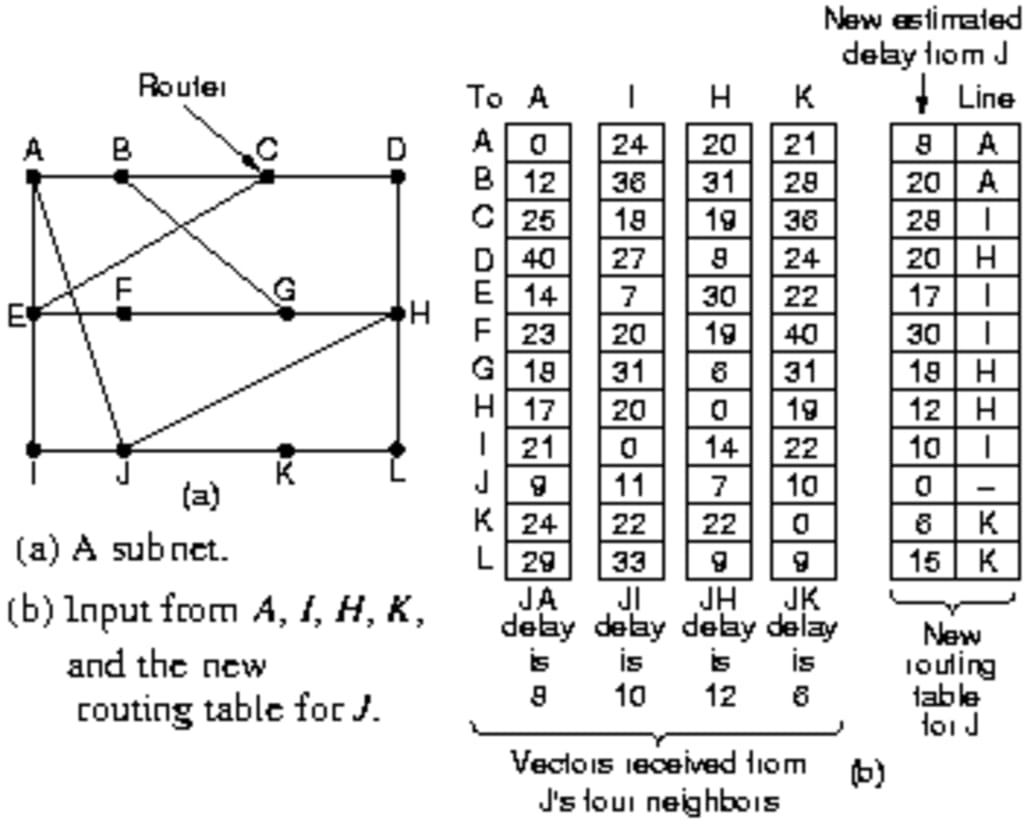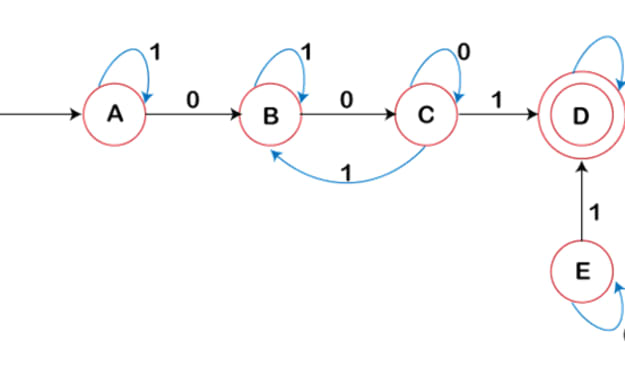Distance Vector Routing Protocol Program in C
Understanding and Implementing the Bellman-Ford Algorithm for Network Routing in C

Introduction
Distance Vector Routing Protocol (DVRP) is one of the fundamental routing protocols used in network communications. It determines the best path for data packets to travel across a network using distance vectors to track the total cost to each destination. Each router periodically shares its routing table with its immediate neighbors, allowing the network to dynamically adapt to changes and find the most efficient paths.
This article will delve into the implementation of a Distance Vector Routing Protocol program in C, explaining key concepts, data structures, and the algorithm involved.
Key Concepts
Before we dive into the implementation, let's briefly review some key concepts of the Distance Vector Routing Protocol:
Distance Vector:
Each router maintains a table (vector) containing the distance (cost) to every possible destination in the network. Periodic Updates: Routers periodically send their distance vectors to their immediate neighbors.
Bellman-Ford Algorithm:
The protocol is based on the Bellman-Ford algorithm, which calculates the shortest paths from a source node to all other nodes in the network.
Convergence:
The network reaches convergence when all routers have consistent and accurate routing tables.
Data Structures
In C, we can represent the network and routing tables using arrays and structures. Here are the primary data structures used in our DVRP implementation:
- Node Structure:
typedef struct {
int id; // Node ID
int distance[MAX_NODES]; // Distance vector to other nodes
int nextHop[MAX_NODES]; // Next hop to reach each node
} Node;
- Network Representation:
#define MAX_NODES 10 // Maximum number of nodes in the network
Node nodes[MAX_NODES]; // Array of nodes
int costMatrix[MAX_NODES][MAX_NODES]; // Cost matrix representing the network
- Algorithm
The DVRP algorithm can be broken down into the following steps:
Initialization: Initialize the distance vectors and next hops for all nodes.
Update Distance Vectors: Periodically update the distance vectors based on information received from neighbors.
Bellman-Ford Update: Apply the Bellman-Ford algorithm to update the routing tables.
Convergence Check: Check if the network has reached convergence.
Implementation
Here is a simplified implementation of the Distance Vector Routing Protocol in C:
#include <stdio.h>
#include <stdlib.h>
#define MAX_NODES 10
#define INFINITY 9999
typedef struct {
int id;
int distance[MAX_NODES];
int nextHop[MAX_NODES];
} Node;
Node nodes[MAX_NODES];
int costMatrix[MAX_NODES][MAX_NODES];
int numNodes;
void initializeNodes() {
for (int i = 0; i < numNodes; i++) {
for (int j = 0; j < numNodes; j++) {
if (i == j) {
nodes[i].distance[j] = 0;
nodes[i].nextHop[j] = i;
} else if (costMatrix[i][j] != 0) {
nodes[i].distance[j] = costMatrix[i][j];
nodes[i].nextHop[j] = j;
} else {
nodes[i].distance[j] = INFINITY;
nodes[i].nextHop[j] = -1;
}
}
}
}
void updateDistanceVector(int node) {
for (int i = 0; i < numNodes; i++) {
if (i != node) {
for (int j = 0; j < numNodes; j++) {
if (nodes[node].distance[j] > costMatrix[node][i] + nodes[i].distance[j]) {
nodes[node].distance[j] = costMatrix[node][i] + nodes[i].distance[j];
nodes[node].nextHop[j] = i;
}
}
}
}
}
void printRoutingTable() {
for (int i = 0; i < numNodes; i++) {
printf("Routing table for node %d:\n", i);
printf("Destination\tDistance\tNext Hop\n");
for (int j = 0; j < numNodes; j++) {
if (nodes[i].distance[j] == INFINITY) {
printf("%d\t\tINFINITY\t-\n", j);
} else {
printf("%d\t\t%d\t\t%d\n", j, nodes[i].distance[j], nodes[i].nextHop[j]);
}
}
printf("\n");
}
}
int main() {
printf("Enter the number of nodes: ");
scanf("%d", &numNodes);
printf("Enter the cost matrix:\n");
for (int i = 0; i < numNodes; i++) {
for (int j = 0; j < numNodes; j++) {
scanf("%d", &costMatrix[i][j]);
}
}
initializeNodes();
int converged = 0;
while (!converged) {
converged = 1;
for (int i = 0; i < numNodes; i++) {
int oldDistance[MAX_NODES];
for (int j = 0; j < numNodes; j++) {
oldDistance[j] = nodes[i].distance[j];
}
updateDistanceVector(i);
for (int j = 0; j < numNodes; j++) {
if (nodes[i].distance[j] != oldDistance[j]) {
converged = 0;
}
}
}
}
printRoutingTable();
return 0;
}
Explanation
Initialization:
initializeNodes() initializes the distance vectors and next hops for all nodes based on the provided cost matrix.
Update Distance Vectors:
updateDistanceVector(int node) updates the distance vector of the specified node using the Bellman-Ford algorithm.
Convergence Check:
The main loop continues to update distance vectors until the network reaches convergence (i.e., no changes in any distance vectors).
Print Routing Table:
printRoutingTable() prints the routing tables for all nodes, showing the distance to each destination and the next hop.
Conclusion
Implementing the Distance Vector Routing Protocol in C provides a practical understanding of network routing concepts and the Bellman-Ford algorithm. This basic implementation can be further enhanced by adding features such as handling link failures, supporting larger networks, and optimizing performance. By understanding and experimenting with this code, one can gain deeper insights into the inner workings of dynamic routing protocols.
About the Creator
Pushpendra Sharma
I am currently working as Digital Marketing Executive in Tutorials and Examples.
Enjoyed the story? Support the Creator.
Subscribe for free to receive all their stories in your feed. You could also pledge your support or give them a one-off tip, letting them know you appreciate their work.






Comments
There are no comments for this story
Be the first to respond and start the conversation.